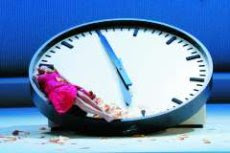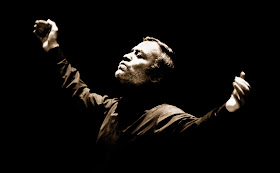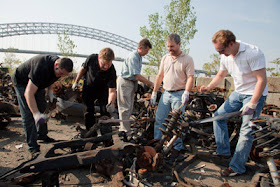 |
| Robert Spano |
The concert opened with Fratres by esteemed Estonian composer Arvo Pärt. The strings undulated, revealing a series of simple, repeated chords. They were accompanied by a sole percussionist (playing floor tom and a single clave who provided gentle punctuation to the non-melody. The mystic, minimalist cloud of sound that floated in the air and simply dissipates.
The full orchestra arrived for the Suite from Béla Bartók's ballet The Miraculous Mandarin. Music director Robert Spano brought forth the thunderous clatter of Bartók's score with precise control over the thundering brass and difficult cross-rhythms from the multiple percussionists. The lengthy oboe and clarinet obbligatos in the score require heroic effort from their soloists--and the Atlanta winds rose to the challenge. One complaint: the Suite contains the first two-thirds of the 30-minute ballet. It would have been preferable to hear the entire work.
Leoš Janáček's Glagolitic Mass translates the Roman Catholic liturgy to Old Church Slavonic, the language spoken by Christians in Bohemia (now the Czech Republic) before the standardization of the Latin church text. (The title refers to the Glagolitic alphabet that was used frequently in medieval Bohemia). Janáček was not a religious man, but the rock-solid power of his musical invention cannot be questioned.
Mr. Spano led a vigorous performance of the opening Intrada. But it was when the magnificent ASO Chorus lifted their voices in the Kyrie that the full measure of Janáček's genius was revealed. Soprano Twyla Robinson soared over the Kyrie and delivered some fine vocal moments in the Gloria. Monica Groop, the Finnish mezzo-soprano, had the best voice of the four, but not enough music to sing. Burik Bilgili has a full, pleasing bass instrument, but tenor John Mac Master was loud and unsubtle. He seemed to be grappling with the text of the Credo. The four vocal soloists took turns in sections of the Credo, Sanctus and Agnus Dei, creating a cathedral of sound, buttressed by the steady chorus.
Organ soloist Peter Mashall played his difficult solo with utter fearlessness. The Mass features everything that is wonderful about this composer. Janáček's trademarks include odd chords and rhythms, angular, folk-inspired melodies, and the sunny, wilderness textures that recall the best pages of his operatic works.





















